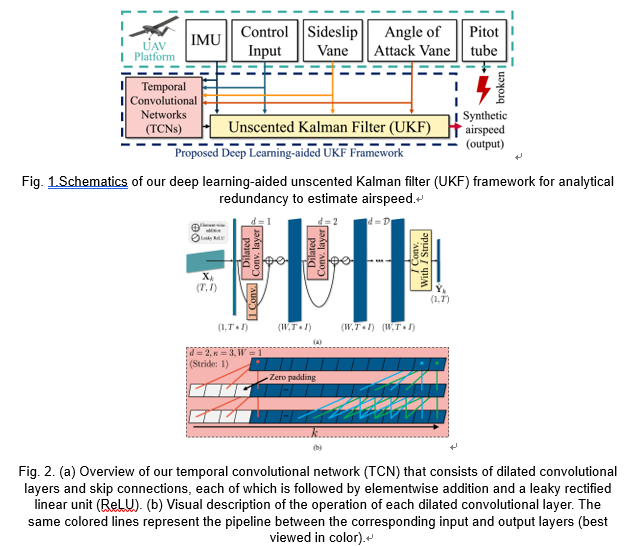- Abstract
A synthetic air data system (SADS) is an analytical redundancy technique that is crucial for unmanned aerial vehicles (UAVs) and is used as a backup system during air data sensor failures. Unfortunately, the existing state-of-the-art approaches for SADS require GPS signals or high-fidelity dynamic UAV models. To address this problem, a novel synthetic airspeed estimation method that leverages deep learning and an unscented Kalman filter (UKF) for analytical redundancy is proposed. Our novel fusion-based method only requires an inertial measurement unit (IMU), elevator control input, and airflow angles while GPS, lift/drag coefficients, and complex aircraft dynamic models are not required. Additionally, we demonstrate that our proposed temporal convolutional network (TCN) is a more efficient model for airspeed estimation than the renowned models, such as ResNet or bidirectional long short-term memory (LSTM). Our deep learning-aided UKF was experimentally verified on long-duration real flight data and has promising performance compared with the state-of-the-art methods. In particular, it is confirmed that our proposed method robustly estimates the airspeed even under dynamic flight conditions where the performance of conventional methods is degraded.
